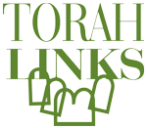The ‘do it yourself’ attitude has earned a prominent place in our society. Besides the potential financial savings involved, people enjoy the fulfillment of tackling a project themselves and seeing what they can do on their own. They enjoy the camaraderie of the family undertaking the project together, pooling their common talents toward a united goal.
(Incidentally, Readers Digest printed a survey which suggests that do it yourself projects enhance a marriage: 36% of respondents said the best part of the job was working with their spouse, and 28% said they were impressed how they worked together as a team! Only 6% responded that they fought like cats and dogs.)
Companies that cater to the “do it yourselfers” have become quite successful over time. The Home Depot earned a spot as one of the thirty blue chip companies that comprise the Dow Jones Industrial Average by catering to this crowd with products and service. Lowe’s has also capitalized on the popularity of this market.
There is one area however that one cannot learn on his own and requires the counsel and tutelage of a higher authority: Torah study. Our laws are so detailed and intricate that the average person, even with the best of intentions, can easily err without fully understanding their complexities.
Sometimes the Torah can write something very cryptic, making it nearly impossible for one to know the correct halacha (rule) without proper guidance. The classic example is “an eye for an eye.” The Torah states that one who blinds someone must pay with his own eye. It would seem that the Torah is suggesting that the aggressor be blinded as punishment for blinding his victim. (This practice is followed in many Moslem countries.) However, the Rabbis explain that the Torah merely means that one must pay the value of the victim’s eye. The aggressor must pay the difference (“damages”) between what the victim was worth with two eyes and how much he is worth today. There is thus a profound distinction between the literal meaning of the law and the way the Rabbis interpret it. One must therefore seek the counsel of a qualified rabbi or teacher to properly understand the nuances of each law.
This week’s portion provides another example. Kosher meat must be slaughtered according to Jewish law, yet the Torah writes only three words of explanation: “Vezavachta ka’asher tzivisicha- You should slaughter as I commanded you.” The Torah doesn’t elaborate any further! The Torah just alludes to the fact that G-d taught the intricate laws of ritual slaughter to Moshe but doesn’t spell them out in the Torah.
However, the Rabbis do discuss these laws in great detail in the Mishna and the Talmud based upon the tradition give to Moshe at Mount Sinai and transmitted through the generations. Only with proper guidance can one gain a full understanding and appreciation of these laws.
These examples highlight the significance that a rabbi or teacher plays in our daily lives. They spend hours, days and even years studying the Torah and its commentaries from their teachers, to make sure that they properly understand each law in its finest detail. They preserve our heritage by serving as living resources for the timeless traditions that have been taught from generation to generation. Our Rabbis and teachers deserve our utmost respect and gratitude for imparting their wealth of knowledge to us. May we merit to be forever guided by their valuable insight and wise counsel.

